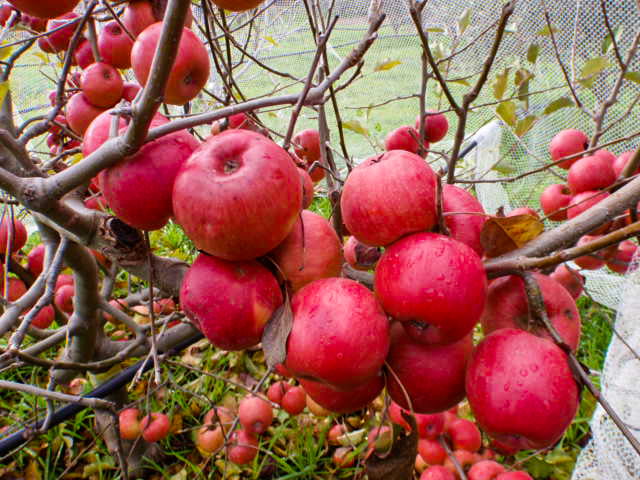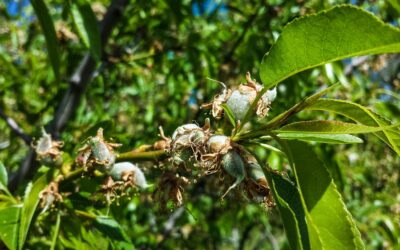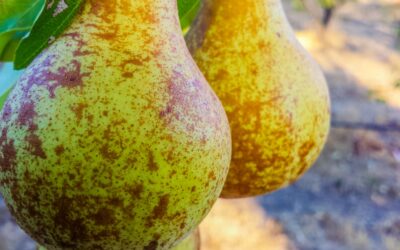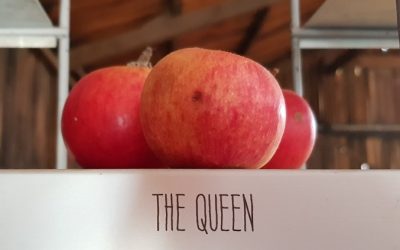Estimated reading time: 4 minutes
One of the questions we were asked recently is “How long can I stretch out my fruit season?” It was from a Grow Great Fruit member who lives in a temperate climate, like us.
Cold winters mean there’s not much deciduous fruit available during winter and spring, but that doesn’t mean you have to go without home-grown fruit at those times.
The Grow Great Fruit system is all about supplying yourself with home-grown fruit, all year around. Exactly how you do that will depend a bit on your climate.
Related Articles
How To Grow Almonds
Almonds are a beautiful and easy-care tree to include in your garden, with nuts that are delicious and protein-rich.
10 excellent reasons to grow pears
Learn how easy it is to grow pears. They’re easy to look after, don’t mind a wet spot in your garden, and are fabulously healthy to eat.
7 reasons to grow heritage and heirloom apples
By planting a heritage or heirloom apple variety in your garden, you can help preserve varieties that might otherwise be lost.
Why it makes sense to create a long season
A long season is something we’re constantly aiming for at our place. We’ve learned that it’s one of the best tools available to increase your food security.
It makes sense to plan your garden so you can harvest fresh fruit from your own trees for as long as possible, and not just at the peak of summer. This reduces the amount of time during the year when you have to buy fruit, and saves money.
It also decreases the risk of losing your food supply to poor weather.
When bad things (like hail) happen, they rarely affect all fruit crops the same way. The more different crops (varieties) you grow, the less you risk losing everything in a weather event, or because of seasonal variations like a really wet spring.
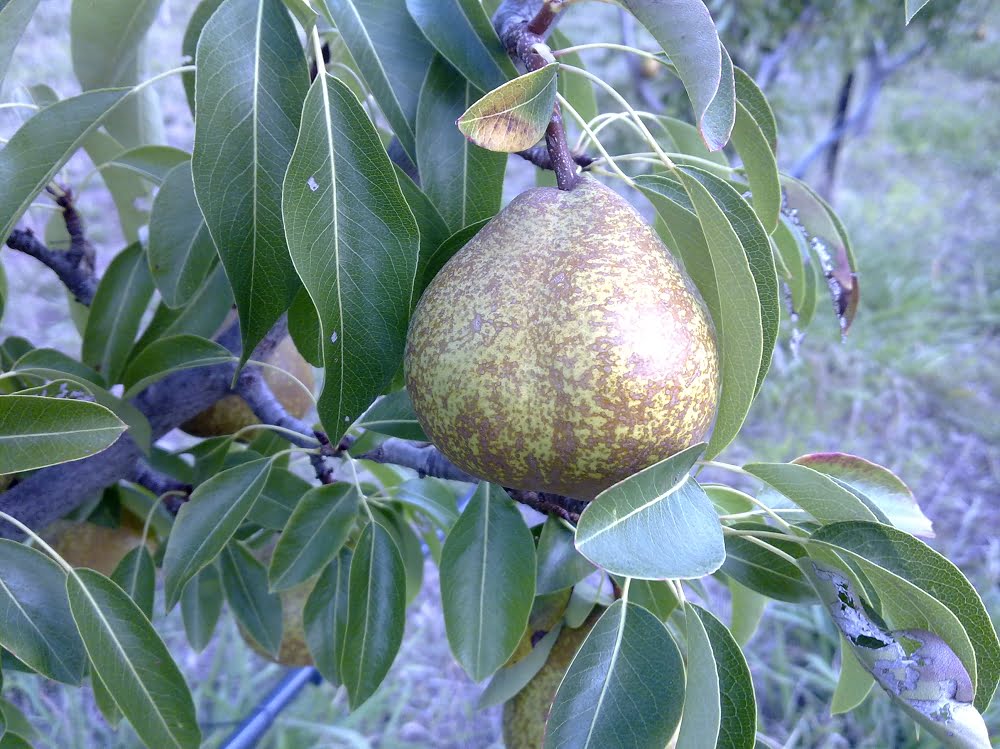
Adding late-season varieties to your garden
One of the first things to consider when planning your orchard is choosing the right types of fruit to grow.
If you include some very late-season fruit trees (e.g., Autumn Giant plums, Lady William or Sundowner apples, or Corella or Winter Nelis pears), you might still be picking or have fruit on the trees well into autumn.
These very late varieties are an excellent way to stretch the season.
Typically at our place, we’re picking Pink Lady apples in late April and early May. Lady Williams and Sundowner are even later.
Storing fruit on the tree
Another advantage of late-ripening varieties like Lady Williams or even Granny Smith apples is that they will store quite well on the tree.
The rate of ripening slows down as the weather ripens, so you may be able to leave them hanging for weeks (or even months) before they need picking.
This only works if you protect them from the birds, of course. It’s also important to keep a regular eye on them when you’re doing your monitoring to make sure they’re maintaining good quality on the tree.
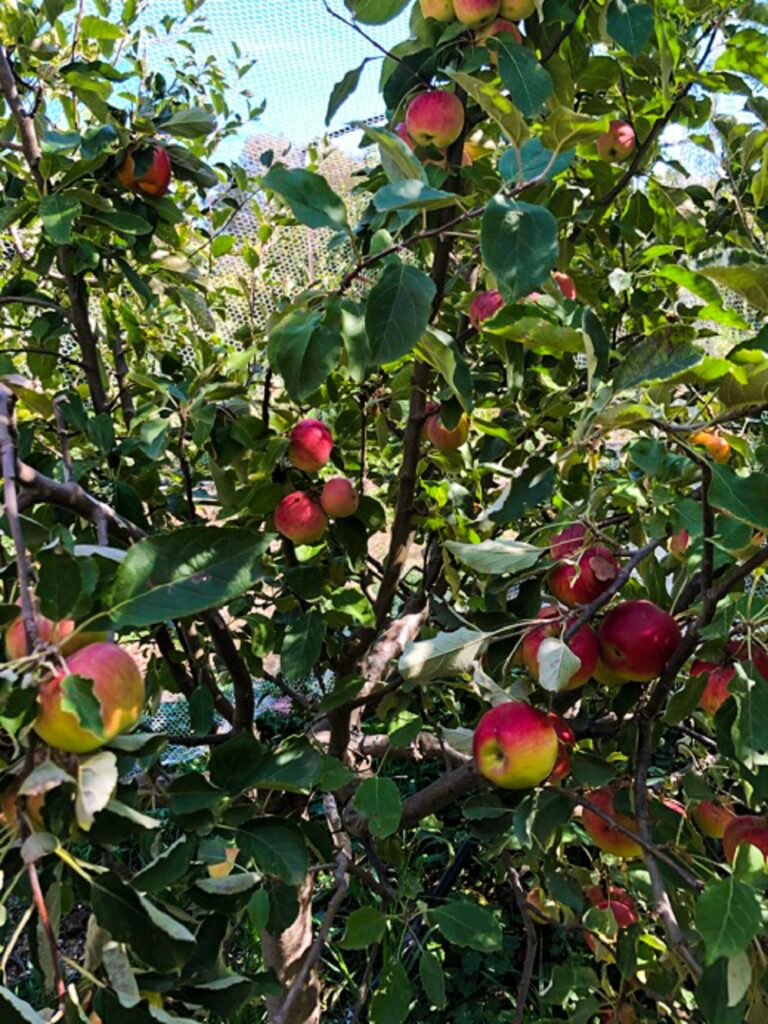
The downside of late-season fruit trees
Extending the season has a couple of management consequences.
For one thing, you need to pay attention to the trees for longer. That means your monitoring visits should be ongoing, and your attention to pest and disease prevention shouldn’t stop either.
For example, late fruiting varieties are more vulnerable to Queensland Fruit Fly. The longer the fruit is on the tree, the more opportunities for these pesky pests to find and attack the fruit.
The last fruit available in the season can be even more vulnerable than fruit that ripens earlier, because there’s not much else around for them to eat.
However, depending on your climate this might not be too much of a problem, because the fruit flies might have already stopped reproducing for the season. Not sure if it will be a problem for you? The key is to understand their lifecycle.
Watering needs of late season fruit
Late varieties have different water needs from your stonefruit trees and will probably need water for longer. As long as your trees have fruit, they still need water.
But it can be hard to keep them in mind once the heat of summer is gone.
If the soil around your fruit trees is dry, make sure your water them as needed right up until the fruit is properly ripened, and completely harvested.
Once you’ve finished picking the fruit, you can usually drastically cut back (or stop) irrigating your mature trees, even in a dry summer.
Of course, you should never water unnecessarily, so careful monitoring is key. You can also choose to pick the fruit as soon as it’s ripe if you’re in a drought and looking for water-saving strategies.
(Pro tip: check the climate outlook to help predict how much help your trees will need from irrigation water at the start of each fruit season.)
And remember that young trees are a different case altogether. They should never be allowed to dry out while they still have leaves on them.
Related Articles
How To Grow Almonds
Almonds are a beautiful and easy-care tree to include in your garden, with nuts that are delicious and protein-rich.
10 excellent reasons to grow pears
Learn how easy it is to grow pears. They’re easy to look after, don’t mind a wet spot in your garden, and are fabulously healthy to eat.
7 reasons to grow heritage and heirloom apples
By planting a heritage or heirloom apple variety in your garden, you can help preserve varieties that might otherwise be lost.

